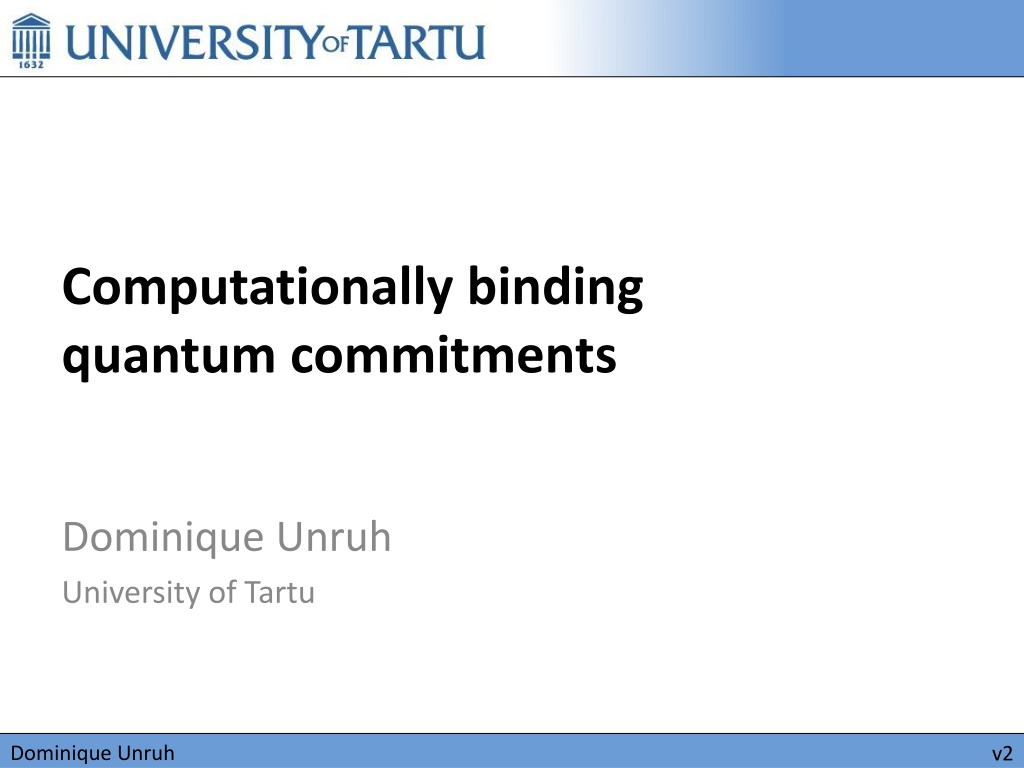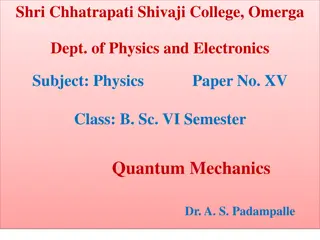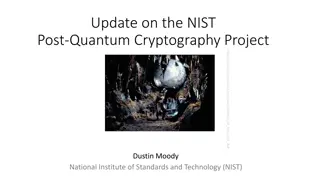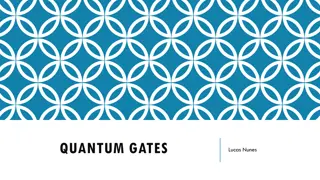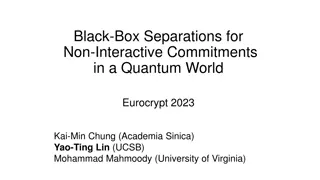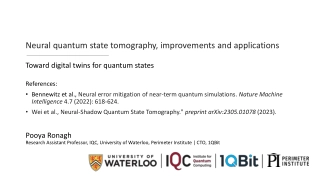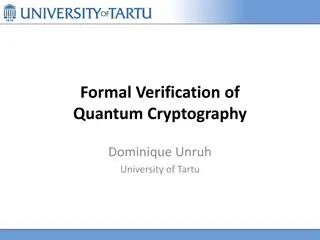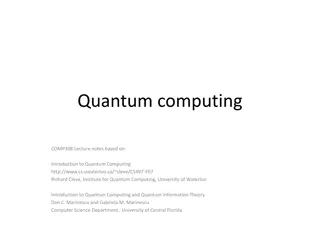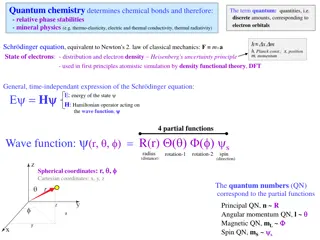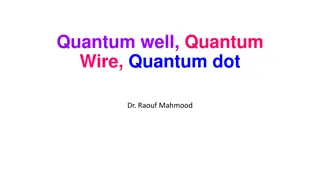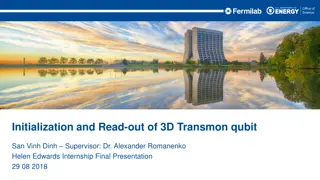New Perspectives on Computationally Binding Quantum Commitments
Exploring the concept of computationally binding quantum commitments through classical and new definitions focusing on collapsing hash functions, highlighting existing definitions, and proposing stronger definitions for post-quantum cryptography. The talk delves into the nuances of commitments, addressing hiding, binding, security against quantum attacks, classical-style binding protocols, and the need for trapdoors in prior definitions.
Download Presentation

Please find below an Image/Link to download the presentation.
The content on the website is provided AS IS for your information and personal use only. It may not be sold, licensed, or shared on other websites without obtaining consent from the author. Download presentation by click this link. If you encounter any issues during the download, it is possible that the publisher has removed the file from their server.
E N D
Presentation Transcript
Computationally binding quantum commitments Dominique Unruh University of Tartu Dominique Unruh v2
Scope of this talk: Commitments Hiding and binding Hiding seems well understood Statistically vs. computationally binding Weaker assms, everlasting security Interactive vs. non-interactive For now Secure against quantum attacks Classical protocols Computationally binding commitments Dominique Unruh
Classical definitions ? Commit: S S R R ?,? Open: Computationally binding (classical-style): Hard to find: ? and ? ? and ?,? s.t.: ? opens ? as ? ? opens ? as ? Adv. cannot change his mind Computationally binding commitments Dominique Unruh
Classical-style binding: no good collision-resistant hash function ? (quantum secure; relative to oracle) Commit proto: Pick ?. Send ? ?(? ? . Classical-style binding: Yes But: ? (fake) Adv Adv ? (random) ? with ?(? ? = ? Computationally binding commitments Dominique Unruh
New definitions needed Classical def of computationally binding: Not useful for post-quantum crypto Our proposal: Our proposal: Collapse Collapse- -binding commitments binding commitments Collision-resistance Weaker than expected Stronger def? (NIST post-quantum competition?) Our proposal: Our proposal: Collapsing hash functions Collapsing hash functions Computationally binding commitments Dominique Unruh
Existing defs (binding) Various prior def s Brassard, Cr peau, Damg rd, Dumais, Fehr, Jozsa, Langlois, Lunemann, Mayers, Salvail, Schaffner Various problems: Need trapdoors (or even UC) Rewinding proofs difficult No parallel composition Do not imply knowledge of message Computationally binding commitments Dominique Unruh
Collapse-binding commitments Adv. A outputs commitment ? (classically), and valid openings ?,? (in superposition) |? |? A A A A A A A A or |? |? ? ? Def: Collapse-binding = A cannot distinguish Computationally binding commitments Dominique Unruh
Why this def? Intuition: Adversary cannot produce several openings in superposition If he could, he d notice measurement Formally: Weaker than non-existence of two openings (perfect) Stronger than hard to find two openings (class.-style) kind of |? |? A A |? A A A A A A or |? ? ? Computationally binding commitments Dominique Unruh
Properties Perfect binding collapse-binding classical-style binding Avoids change of mind Composes in parallel Rewinding friendly gives ZK arguments of knowledge Simple constructions from collapsing hashes Computationally binding commitments Dominique Unruh
Collapsing hash functions Strengthening of collision-resistance for quantum setting Adv. A outputs hash (classically), and preimages ? (in superposition) |? |? A A A A A A A A or ? Def: Collapsing = A cannot distinguish Computationally binding commitments Dominique Unruh
Collapsing hash functions (ctd.) Simple collapse-binding commitments Statistically hiding Using collapsing hashes in existing constructions Drop in replacement for collision-resistance ? Random oracle is collapsing hash Suggestion: Collapsing required property for hashes e.g., NIST post-quantum crypto competition Computationally binding commitments Dominique Unruh
Open questions Collapse-binding com s based on OWFs? Implications between defs? (partially done) Are SHA-2, SHA-3, collapsing? (partially done) Protocols using collapse-binding com s Computationally binding commitments Dominique Unruh
I thank for your attention This research was supported by European Social Fund s Doctoral Studies and Internationalisation Programme DoRa Dominique Unruh
